Ok, I have some good ones to recommend! A few deep, heavy books and a few light reading. A good mix, I’d say. 🙂
Jessica is a Chinese American who lived in Australia and Beijing and now lived in London with her British husband. A self-proclaimed introvert/borderline recluse, she found that she was feeling lonely and lost.
“I’m really good at other things, like loitering palely in dark doorways. Disappearing into couch corners. Leaving early. Feigning sleep on public transportation.”
All of her friends had moved away, married, had kids, moved on and she wanted to challenge herself to becoming an extrovert. She was impressed with her friends who were extroverts and she wanted to mirror what they did.
“Willow had stopped to pet a woman’s dog in Prospect Park: she ended up spending the day with the woman, going to a jazz club with her until 4 a.m., and later landing her dream job through one of her new friend’s connections. She’d met her boyfriend in a line for the bathroom at a festival. She discovered she had hypoglycemia by talking to a doctor at a party. Her entire life has been shaped by these random encounters. All because she chooses to talk and listen to people she has just met, rather than run away from them at full speed muttering, “I don’t speak English!” “
So she sought out advice from experts in the field. She went to class, therapy, she took an improv course. She took a class in stand-up comedy that resulted in her having to actually perform. She spoke to random strangers everywhere she went.
“In London, I learned quickly that if you talk to a stranger in public, they look at you like you’ve slapped them in the face: shocked and aggrieved. Betrayed as well, because you have broken the social contract that we all agreed to follow in public: no one exists but you.”
She went to networking events:
“I make a few rules before each event. Go with an intention. Talk to three people, with Richard’s advice in mind, and aim to really bond or connect with one person. Psychologists also say that it takes time for shy people to warm up, so if you always leave after ten minutes, you’re never giving yourself the chance to actually succeed. Stay for at least an hour.”
I found the book really fascinating and funny. The writer is hilarious and her sense of humor is dry. I enjoyed the book and I enjoyed reading about her journey and the growth she went through.
“…over the course of the year, I’d simply found that it was easy to get into Deep Talk with other women. Maybe it was because we usually had more in common, maybe it was because we’re generally encouraged to talk more openly about our feelings—I don’t know why, but it just seemed like every time I took that leap into the uncomfortable unknown, women would leap right in after me.”
The book also made me think of my own life and how often I say “no” to events because of anxiety or fear. And it made me question how my life could be enriched if I said yes more often.
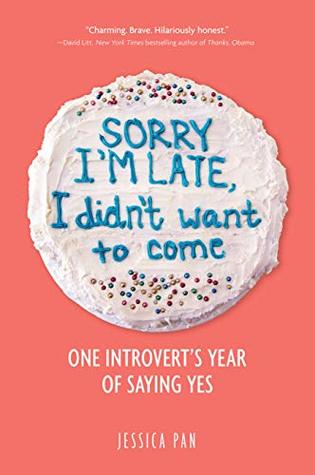
#2 Sunset Beach by Mary Kay Andrews
It was predictable but enjoyable.
Drue is in her mid-thirties. Her life is not going as planned. She’s a jock that has to give up her sport due to an injury and her drifter-type lifestyle comes to an end when she gets fired as a bartender. Her mom dies and her estranged dad offers her a job in his law office. Since she’s down and out she decides to take it. She needs the money.
The story is about Drue reconnecting with her dad, repairing the relationship, discovering she’s pretty good at being a private investigator, and uncovering who murdered one of their clients.
The book is pretty good. There were some slow parts in the middle and some parts that needed some editing down for brevity sake but overall I liked the character, I liked the story and the world that was created.
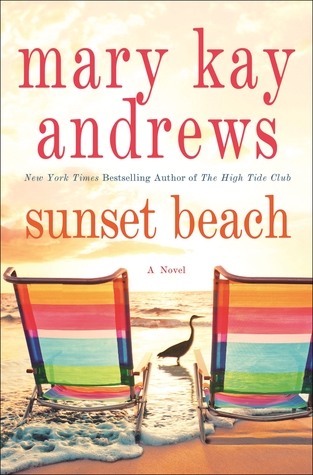
#3 The Bookshop on the Shore by Jenny Colgan
I enjoyed this book a lot. Zoe is a single mom to Hari, who is 4 and doesn’t speak yet. She’s struggling in London. Her job isn’t great, she barely makes any money to get by, her flat is horrible and living in London is busy, crowded and dirty. Her ex-boyfriend is no help. She’s at her wit’s end and a friend reaches out and gives her a lifeline. She decides to pack everything up and move to Scotland to be a nanny and help out Nina with her book mobile in Scotland.
The three kids she’s a nanny for are terrible. She’s “Nanny Number 7”. They live in a big castle in the middle of nowhere. The housekeeper is a curmudgeon. The father is a recluse and rarely around. But Zoe is determined to make it work.
The book is charming and you really picture the environment. I liked it a lot.
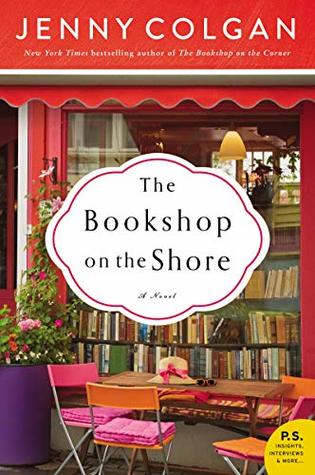
#4 Silver Sparrow by Tayari Jones
This was a very interesting, well-written book. It spans a few decades, but focuses on the 1980s. Dana is a teenager in Atlanta, being raised by her mother who is “married” to James Witherspoon, a bigamist. Dana and her mother are aware of his first family, wife Laverne and daughter Chaurisse. But the first family has no idea they exist.
The book is a fascinating read about African America culture in the 80s, the history of racism in the south, and how bigamy “works” (or doesn’t). Dana and Chaurisse tell their stories, and of course, the two worlds collide and the truth comes to light. It’s so well written and I could not put it down! I didn’t like the ending but the rest of the book was excellent.
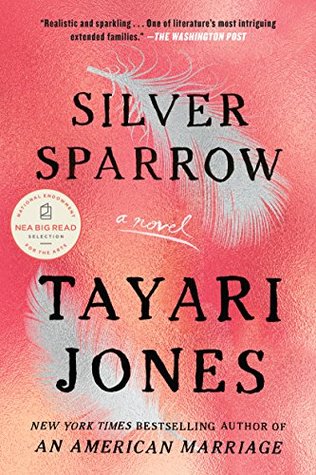
I heard about this book on a podcast and it was a very interesting read! The author is a first generation Indian, living in Memphis, which is apparently a very segregated city. She writes a lot about race and what it was like being brown in a very white city.
“I came of age not feeling fully at home in either black or white spaces… I
was born brown in a city divided into black and white… I started to resent being treated as a one-woman diversity show.”
“… white classmates asking for bindis after Gwen Stefani started wearing them on the red carpet in 1998 was stressful. None of us knew what “cultural appropriation” was yet, but I could feel the specter of it pulsing around the edge of my life.”
Eventually she came out as bisexual and married a white woman and they adopted an African American baby boy. She writes about the struggles she has living in the south as an Indian-American, a lesbian, and a mother of a black boy who might be transgender.
“… when the act of explaining your family structure becomes a part of every day of your life, you grow tired of being gracious.”
“That’s always the message: You can be gay as long as you aren’t too gay. Or you can be gay in private. We’ll let you stay if you live a compartmentalized life; keep the freaky stuff where we can’t see it.”
It’s a very deep and thoughtful book; very revealing and honest. And despite the heavy topics of race, racism, homophobia and trans-phobia, the book didn’t feel dark or heavy or depressing. It felt like an honest reflection of one woman’s experience, without anger or resentment, as she tries to live her best life in a space that doesn’t understand “different.”
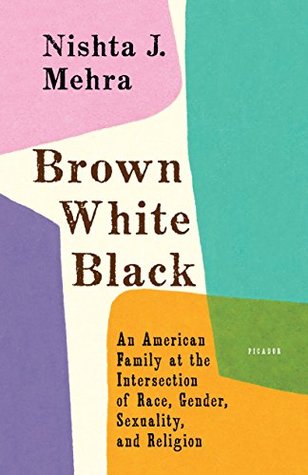
#6 The Lost City of the Monkey God by Douglas Preston
Holy smokes! This is by the best book I’ve read this year. It was so engrossing, so exciting, so fascinating, I COULD.NOT.PUT.IT.DOWN. And when I finished reading it, I was bummed out.
It’s a non-fiction book about a lost city in Honduras. The writer talks about the mythology around the lost city and what cultures may have lived there, Maya or something else?
“Somewhere in this impassable wilderness, it is said, lies a “lost city” built of white stone. It is called Ciudad Blanca, the “White City,” also referred to as the “Lost City of the Monkey God.” “
He writes about all the different attempts to find the city. And he also explains the history of Honduras and South America that adds a lot of depth to the story without bogging it down and making it slow or boring to read. NO editing needed! It was perfect.
He joins a group of scientists and filmmakers who are trying to find the lost city with new technology.
“It was the first time our expedition had come together in one room, a rather motley crew of scientists, photographers, film producers, and archaeologists, plus me, a writer. We all had widely varying experience in wilderness skills. Catacamas was a dangerous city, controlled by a violent drug cartel; no one was to leave the hotel without an armed military escort. We were to keep our mouths shut about what we were doing here. We were not to engage in conversation about the project within hearing of hotel staff, or leave papers lying around our rooms referring to the work, or conduct cell phone calls in public.”
I was super fascinated by all the horrors in the jungle, too.
“It has pools of quickmud that can swallow a person alive. The understory is infested with deadly snakes, jaguars, and thickets of catclaw vines with hooked thorns that tear at flesh and clothing… As for the hazards we would face in the jungle, venomous snakes were at the top of the list. The fer-de-lance, he said, is known in these parts as the barba amarilla (“yellow beard”). It kills more people in the New World than any other snake. It comes out at night and is attracted to people and activity. It is aggressive, irritable, and fast. Its fangs have been observed to squirt venom for more than six feet…The venom is deadly; if it doesn’t kill you outright through a brain hemorrhage, it may very well kill you later through sepsis. If you survive, the limb that was struck often has to be amputated, due to the necrotizing nature of the poison… He told us to wear our Kevlar snake gaiters at all times, including—especially—when we got up to pee at night.”
“… disease-bearing insects we might encounter, including mosquitoes** and sand flies, chiggers, ticks, kissing bugs (so called because they like to bite your face), scorpions, and bullet ants, whose bite equals the pain of being shot with a bullet.”
After much planning the group went into the jungle and had security with them at all times. Then they had Honduran security camped nearby to keep the cartel away from them).
“On a hard day’s travel they were lucky to make one or two miles. Steve and his crew ate MREs, while the Indian guides ate iguanas. At one point the guides became agitated; taking out their weapons, they confided that the group was being tracked by jaguars. They frequently ran into venomous snakes and were assaulted day and night by insects.”
The book also discusses how untouched that particular Honduran rain forest was. “The spider monkeys, he said, were another sign of an uninhabited area, as they normally flee at the first sight of humans, unless they are in a protected zone. He concluded, “I don’t think the animals here have ever seen people before.”
And the tragic reality: “The Honduran rainforests are disappearing at a rate of at least 300,000 acres a year. Between 1990 and 2010, Honduras lost over 37 percent of its rainforest to clear-cutting.”
I will leave off here because I don’t want to spoil the rest of the book but I will say this: if you are looking for a fantastic read, exciting Indian-Jones-esque book packed with history and culture, read this book. It was SO good. So so good. One of my favorites!
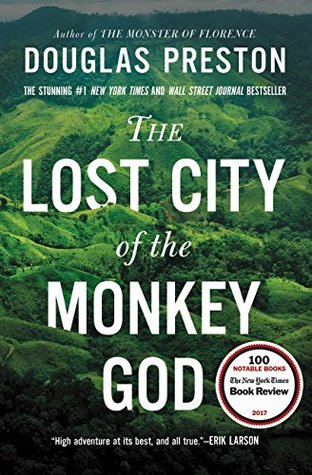
Happy Reading!
These posts have Amazon Affiliate Links.
Carrie @ Season It Already!
I haven’t heard of any of these! Thanks for sharing.
Lisa Eirene
Oh cool! Glad I could share
Vickie
I normally a classics person, but I am sort of running out of classics.
My recent reads are Gretchen Rubin and Elizabeth (her sister) podcast book club selections Inheritance and Small Fry. Both great nonfiction books (and not normally something I would pick). I loved them.
So I got #1 and #6 from your list, from audible, to try (they have a return option, so if I don’t like, can exchange within a year). Maybe nonfiction appeals to me right now.
Thank you for mentioning them.
Lisa Eirene
Cool! Let me know what you think of them. I enjoy non-fiction. Glad you liked Inheritance. I liked that one too
emmaclaire
Interesting group of books, Lisa! All of them sound like they’d be a good read. Thanks for adding to my ever-growing stack of wanna-reads 🙂 I have read several of Douglas Preston’s books he wrote with Lincoln Child and enjoyed them, but I am impressed as well by his non-fiction. I would recommend The Monster of Florence: A True Story, by Preston and Mario Spezi – a great read about trying to figure out who had committed these unsolved murders in Florence and how the 2 authors eventually become targets in the police investigation of the case. Thanks for the new titles!
Lisa Eirene
I enjoyed his fiction too and didn’t know he wrote other nonfiction! I will check that one out!